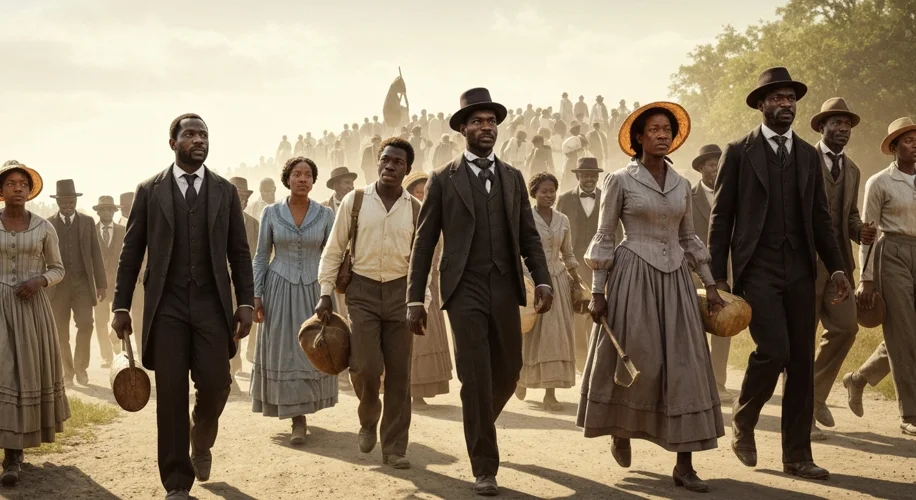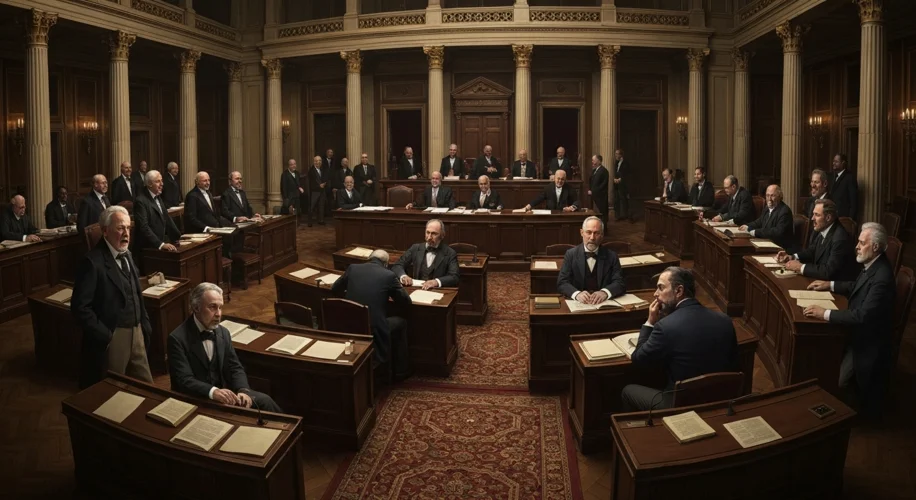The air in America, thick with the smoke of a devastating Civil War, began to clear in 1865. But the silence that followed was not one of peace, but of a tense, uncertain pause. The nation, bruised and broken, stood at a precipice, tasked with a monumental challenge: to rebuild not just cities and infrastructure, but a fractured society and to define the very meaning of freedom for millions newly liberated from bondage.
This was the dawn of Reconstruction, a period that would last twelve years, from 1865 to 1877, and would prove to be one of the most complex and contested chapters in American history. It was a time of immense hope, fierce struggle, and ultimately, profound disappointment for many.
Imagine the scene: The Confederacy lay in ruins. Cities like Richmond and Atlanta were smoldering relics of a lost cause. The economy, built on the back of enslaved labor, had collapsed. And then there were the freedmen and freedwomen, over four million souls, stepping out of plantations into a world that offered them liberty but little else. They faced a daunting reality: no land, no capital, no education, and the bitter legacy of centuries of oppression.

Into this volatile landscape stepped the key actors of Reconstruction. On one side were the Radical Republicans in Congress, determined to reshape the South and guarantee civil rights for African Americans. Figures like Thaddeus Stevens and Charles Sumner pushed for transformative change, advocating for land redistribution and federal protection of voting rights. President Andrew Johnson, however, Lincoln’s successor, proved to be a formidable obstacle, favoring a more lenient approach to readmitting Southern states, often at the expense of newly won freedoms.
The Southern states, meanwhile, were a powder keg of resentment. Many former Confederates, clinging to their antebellum ideals, sought to restore the old order as much as possible. They enacted “Black Codes” – oppressive laws designed to control the labor and lives of freed people, effectively recreating a system of near-slavery.
The legislative battles of Reconstruction were fierce. The 13th Amendment, ratified in 1865, abolished slavery. But it was the subsequent amendments that truly sought to redefine American citizenship. The 14th Amendment (1868) granted citizenship and equal protection under the law to all persons born or naturalized in the United States, a landmark provision. The 15th Amendment (1870) prohibited the denial of voting rights based on race, color, or previous condition of servitude.

During Reconstruction, African Americans experienced a taste of political power. They registered to vote, held office in state governments, and even served in Congress. For a brief period, the South saw a flowering of Black political participation, a stark contrast to the decades of disenfranchisement that followed.
But the resistance was relentless. Secret societies like the Ku Klux Klan emerged, using terror and violence to intimidate Black voters and white Republicans. Lynchings became a common tool of oppression. The federal government, despite attempts to intervene with military force, struggled to maintain order and enforce the new laws.
The economic landscape was equally challenging. The “sharecropping” system, where freed people worked land owned by white landowners in exchange for a share of the crops, often ensnared them in cycles of debt, similar to the slavery they had just escaped.

The end of Reconstruction in 1877 is often attributed to a political compromise, the Compromise of 1877, which saw disputed presidential election results settled by withdrawing federal troops from the South. This withdrawal signaled the end of federal protection for Black rights, ushering in the era of Jim Crow laws, segregation, and the systematic disenfranchisement of African Americans that would last for nearly a century.
The legacy of Reconstruction is complex and deeply debated by historians. While it ultimately failed to secure lasting equality for African Americans, it laid crucial constitutional groundwork and demonstrated the potential for Black political agency. It stands as a stark reminder of the fragility of democracy and the enduring struggle for civil rights in America. The hopes ignited in the ashes of the Civil War were, for a time, brutally extinguished, but the fight for true freedom and equality was far from over.

